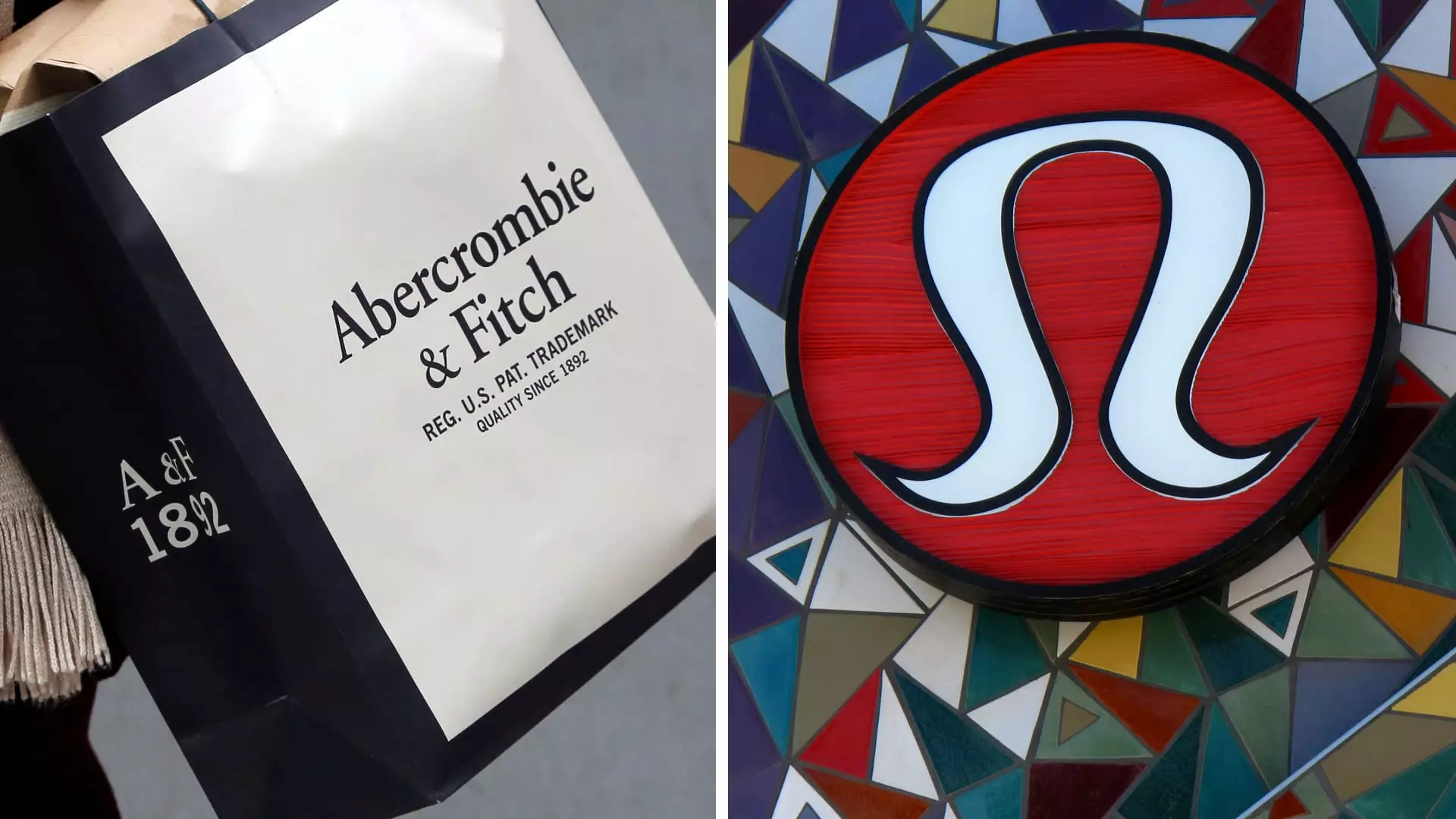The holiday shopping season, a critical period for many retailers, has once again showcased a mix of optimism and concern as companies parse through their preliminary results. While some well-known brands reported performance that exceeded expectations, the accompanying stock market reactions suggest an undercurrent of skepticism from investors. This article delves into the complex dynamics impacting key players in the retail sector as they navigate the post-pandemic landscape.
Major retailers such as Lululemon, Abercrombie & Fitch, and American Eagle all adjusted their fourth-quarter outlooks positively after a robust customer response during the holiday season. However, the excitement did not translate into investor confidence. Despite their positive projections, the shares of these companies dipped sharply in early trading, reflecting a broader market aversion toward retail stocks. For instance, Abercrombie saw its stock plummet by roughly 20%, as investors began to question whether the company’s rapid growth trajectory was sustainable or nearing its end.
While Lululemon raised its guidance for sales projections to a range between $3.56 billion and $3.58 billion—up from earlier estimates—there is a concern that future sales growth may slow, particularly when excluding additional fiscal weeks projected for 2024. This cautionary note indicates that while immediate figures may look promising, the path forward is fraught with challenges that could lead to a recalibration of expectations.
The apparel segment, which has experienced wild fluctuations in consumer spending patterns, poses unique problems. Abercrombie’s raised forecast for sales growth now sits at 7% to 8%, contrasting sharply with the impressive 21% spike in holiday sales from the previous year. Investors are justifiably cautious as they digest these figures, especially given that the previous year set a high benchmark to meet. As many consumers tighten their belts in response to inflation, brands that formerly thrived on high demand may find it increasingly difficult to maintain their upward momentum.
To compound the issue, Macy’s announced disappointing forecasts ahead of the annual ICR conference, showcasing that not all retailers are basking in the same optimistic light. Its expectation that sales would fall short of earlier guidance highlighted a stark contrast to the bullish sentiments expressed by other competitors. As department stores like Macy’s grapple with declining foot traffic and heightened competition from e-commerce, they face significant struggles in reestablishing consumer loyalty.
In light of shifting consumer behaviors and economic realities, retail executives are increasingly prioritizing profitability over sheer revenue growth. Abercrombie’s CEO, Fran Horowitz, emphasized a strategic pivot towards optimizing profits, acknowledging that the company’s two years of double-digit growth may not be sustainable in a constantly changing environment. This prudent approach signals a recognition that profit margins will become paramount for long-term stability amid an uncertain economic landscape.
At the same time, Urban Outfitters reported a commendable increase in net sales for the holiday period, driven significantly by its e-commerce channels. However, it also faced challenges with its Urban banner underperforming compared to its other brands, Anthropologie and Free People, indicating that not every segment of their business is functioning optimally. Such disparities complicate the narrative about holiday retail success, suggesting that while some brands thrive, others may be struggling to find their footing.
Looking Ahead: A Cautious Outlook
While the National Retail Federation projected a modest sales growth between 2.5% and 3.5%, the reality of that growth becomes even murkier when accounting for inflation. Retailers are facing a unique set of challenges that seem to vary widely across different sectors within the industry. The preliminary data indicates that sales between November 1 and December 24 rose by 3.8% year over year; however, the lingering effects of inflation mean that this figure might only reflect nominal gains rather than genuine growth.
As we advance from the holiday season and analyze the early results, the retail landscape appears to be a patchwork of contrasts. While some brands celebrate better-than-expected performance, skepticism from investors highlights an awareness of the underlying economic pressures that could reshape future retail success. Ultimately, fostering a balance between profitability and sustainable growth will be imperative for retailers hoping to navigate the unpredictable climate ahead.

Leave a Reply